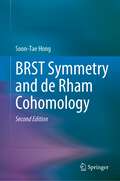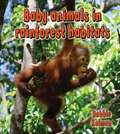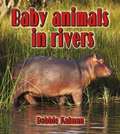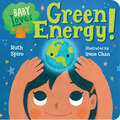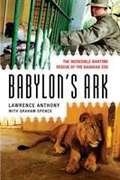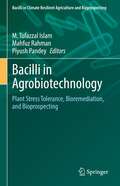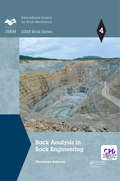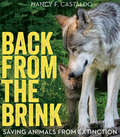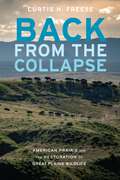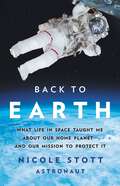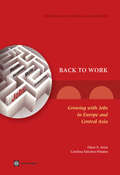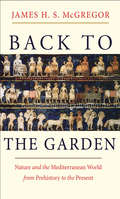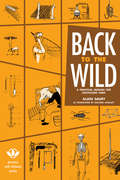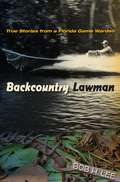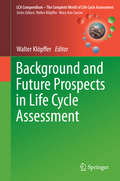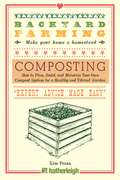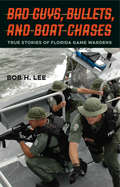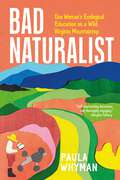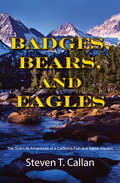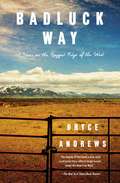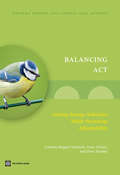- Table View
- List View
BRST Symmetry and de Rham Cohomology
by Soon-Tae HongThis book provides an advanced introduction to extended theories of quantum field theory and algebraic topology, including Hamiltonian quantization associated with some geometrical constraints, symplectic embedding and Hamilton-Jacobi quantization and Becchi-Rouet-Stora-Tyutin (BRST) symmetry, as well as de Rham cohomology. This extended new edition offers a multifaced insight into phenomenology of particles such as baryons and photons, in terms of extended objects. In particular, in the second edition, the baryons are described in hypersphere soliton model, and the photon properties are additionally included in stringy photon model and in Dirac type relativistic quantum mechanics for a photon.It offers a critical overview of the research in this area and unifies the existing literatures, employing a consistent notation. Although the results presented apply in principle to all alternative quantization schemes, special emphasis is placed on the BRST quantization and its de Rham cohomology group which contribute to a deep understanding of constrained physical theories. The book describes how solitons and other models subject to constraints include rigorous treatments of the geometrical constraints which affect the predictions themselves. The book is intended for use by any graduate-level student with quantum field and relativity theories, and it also serves as a useful reference for those working in the field. An extensive bibliography guides the reader toward the source literature on particular topics.
Baby Animals In Rainforest Habitats (Habitats of Baby Animals)
by Bobbie KalmanChildren will love the photos of the exotic baby animals that live in rain forests around the world, such as tigers, monkeys, lemurs, elephants, and sloths. Young readers will also learn about the different kinds of rain forests and discover what life is like for baby animals in both wet and dry seasons.
Baby Animals in Rivers (Habitats of Baby Animals)
by Bobbie KalmanChildren will learn about river habitats and the animals that live in them and along their banks. Baby beavers, crocodiles, brown bears, otters, swans, geese, tigers, and hippos are some of the animals featured. Young readers will learn about a river food chain, learn which animals are herbivores, carnivores, or omnivores, and discover how baby reptiles, birds, and mammals find food in their river homes.
Baby Loves Green Energy! (Baby Loves Science #7)
by Ruth SpiroBig, brainy science for the littlest listeners. Accurate enough to satisfy an expert, yet simple enough for baby, this clever board book explores climate change and the ways we can work to protect our planet for all babies. Highlighting many green energy options, baby learns how to help our environment. Beautiful, visually stimulating illustrations complement age-appropriate language to encourage baby's sense of wonder. With tongue firmly in cheek, the Baby Loves Science series is a fun-filled introduction to STEM concepts for babies, toddlers, and their grown-ups.
Baby Loves Meteorology (Baby Loves Science)
by Ruth SpiroThe Baby Loves Science board book series is big, brainy science for the littlest listeners.It's time to get dressed! How does Baby know what to wear? She checks the weather--and learns about wind, the water cycle, precipitation, and prediction! Accurate enough to satisfy an expert, yet simple enough for baby, this clever board book explores meteorology and what meteorologists do.Beautiful, visually stimulating illustrations complement age-appropriate language to encourage baby's sense of wonder. Parents and caregivers may learn a thing or two as well!
Babylon's Ark: The Incredible Wartime Rescue of the Baghdad Zoo
by Lawrence AnthonyThe astonishing story of the soldiers, conservationists, and ordinary Iraqis who united to save the animals of the Baghdad Zoo. When the Iraq war began, conservationist Lawrence Anthony could think of only one thing: the fate of the Baghdad Zoo, caught in the crossfire at the heart of the city. Once Anthony entered Iraq he discovered that hostilities and uncontrolled looting had devastated the zoo and its animals. Working with members of the zoo staff and a few compassionate U.S. soldiers, he defended the zoo, bartered for food on war-torn streets, and scoured bombed palaces for desperately needed supplies. This book chronicles Anthony's hair-raising efforts to save a pride of Saddam's lions, close a deplorable black-market zoo, run ostriches through shoot-to-kill checkpoints, and rescue the dictator's personal herd of Thoroughbred Arabian horses. A tale of the selfless courage and humanity of a few men and women living dangerously for all the right reasons, the book is an inspiring and uplifting true-life adventure of individuals on both sides working together for the sake of magnificent wildlife caught in a war zone.
Baccharis: From Evolutionary and Ecological Aspects to Social Uses and Medicinal Applications
by Geraldo Wilson Fernandes Yumi Oki Milton BarbosaThis book has a broad scope and provides a comprehensive overview of the most up-to-date knowledge of the plant genus Baccharis. The book is organized into four major topics encompassing the evolution, ecology, chemistry, as well as environmental and medical applications of the genus. This publication is a major reference for an audience of practising researchers, academics, PhD students, and other scientists in a wide-ranging collection of fields, from Sociology to Medicine to bioeconomy.
Bacilli in Agrobiotechnology: Plant Stress Tolerance, Bioremediation, and Bioprospecting (Bacilli in Climate Resilient Agriculture and Bioprospecting)
by M. Tofazzal Islam Mahfuz Rahman Piyush PandeyThe third volume of the series ‘Bacilli and Agrobiotechnology’ is comprised of 25 chapters that bring a unique perspective to the readers about Bacillus-mediated biotic and abiotic plant stress tolerance, bioremediation and bioprospecting. These chapters are prepared by the leading scientists of global repute. The negative impacts of agrochemicals such as chemical fertilizers and pesticides on human health and environment are paramount. Bacillus and allied genera of beneficial plant-associated microbes are presenting beacon of hope to the farmers, plant scientists and stewards of environment. Several chapters of this volume focus on the induction of various signaling pathways in plants by Bacillus spp. to alleviate biotic and abiotic stresses impacted by global climate change Agricultural lands contaminated with heavy metals affect the ecological food chain starting from crop cultivation. How the toxic effects of trace metals originating from industrial effluents and agrochemicals can be remediated? This book addresses how to overcome these issues by applying elite strains of Bacillus. Bioprospecting is a systematic and organized search for conversion of bioresources to industrially important products by utilizing microbe-derived metabolites. This volume is enriched by including the bioprospecting aspects mediated by Bacillus spp. with novel insights.
Back Analysis in Rock Engineering (ISRM Book Series)
by Shunsuke SakuraiThis book provides practicing engineers working in the field of design, construction and monitoring of rock structures such as tunnels and slopes with technical information on how to design, how to excavate and how to monitor the structures during their construction. Based on the long-term engineering experiences of the author, field measurements together with back analyses are presented as the most powerful tools in rock engineering practice. One of the purposes of field measurements is to assess the stability of the rock structures during their construction. However, field measurement results are only numbers unless they are quantitatively interpreted, a process in which back analyses play an important role. The author has developed both the concepts of “critical strain” and of the “anisotropic parameter” of rocks, which can make it possible not only to assess the stability of the structures during their construction, but also to verify the validity of design parameters by the back analysis of field measurement results during the constructions. Based on the back analysis results, the design parameters used at a design stage could be modified if necessary. This procedure is called an “Observational method”, a concept that is entirely different from that of other structures such as bridges and buildings. It is noted that in general, technical books written for practicing engineers mainly focus on empirical approaches which are based on engineers’ experiences. In this book, however, no empirical approaches will be described, instead, all the approaches are based on simple rock mechanics theory. This book is the first to describe an observational method in rock engineering practice, which implies that the potential readers of this book must be practicing engineers working on rock engineering projects.
Back from the Brink: Saving Animals from Extinction
by Nancy CastaldoThe acclaimed author of Sniffer Dogs details the successful efforts of scientists to bring threatened animals back from the brink of extinction, perfect for animal lovers and reluctant nonfiction readers. With full-color photography.How could capturing the last wild California condors help save them? Why are some states planning to cull populations of the gray wolf, despite this species only recently making it off the endangered list? How did a decision made during the Civil War to use alligator skin for cheap boots nearly drive the animal to extinction?Back from the Brink answers these questions and more as it delves into the threats to seven species, and the scientific and political efforts to coax them back from the brink of extinction. This rich, informational look at the problem of extinction has a hopeful tone: all of these animals' numbers are now on the rise.
Back from the Collapse: American Prairie and the Restoration of Great Plains Wildlife
by Curtis H. FreeseBack from the Collapse is a clarion call for restoring one of North America&’s most underappreciated and overlooked ecosystems: the grasslands of the Great Plains. This region has been called America&’s Serengeti in recognition of its historically extraordinary abundance of wildlife. Since Euro-American colonization, however, populations of at least twenty-four species of Great Plains wildlife have collapsed—from pallid sturgeon and burrowing owls to all major mammals, including bison and grizzly bears. In response to this incalculable loss, Curtis H. Freese and other conservationists founded American Prairie, a nonprofit organization with the mission of supporting the region&’s native wildlife by establishing a 3.2-million-acre reserve on the plains of eastern Montana, one of the most intact and highest-priority areas for biodiversity conservation in the Great Plains. In Back from the Collapse Freese explores the evolutionary history of the region&’s ecosystem over millions of years, as it transitioned from subtropical forests to the edge of an ice sheet to today&’s prairies. He details the eventual species collapse and American Prairie&’s work to restore the habitat and wildlife, efforts described by National Geographic as &“one of the most ambitious conservation projects in American history.&”
Back to Earth: What Life in Space Taught Me About Our Home Planet—And Our Mission to Protect It
by Nicole StottInspired by insights gained in spaceflight, a NASA astronaut offers key lessons to empower Earthbound readers to fight climate change. <p><p>When Nicole Stott first saw Earth from space, she realized how interconnected we are and knew she had to help protect our planetary home. <p><p>In Back to Earth, Stott imparts essential lessons in problem-solving, survival, and crisis response that each of us can practice to make change. She knows we can overcome differences to address global issues, because she saw this every day on the International Space Station. Stott shares stories from her spaceflight and insights from scientists, activists, and changemakers working to solve our greatest environmental challenges. She learns about the complexities of Earth’s biodiversity from NASA engineers working to enable life in space and from scientists protecting life on Earth for future generations. <p><p>Ultimately, Stott reveals how we each have the power to respect our planetary home and one another by living our lives like crewmates, not passengers, on an inspiring shared mission
Back to Work
by Erwin R. Tiongson Indhira Santos Omar S. Arias María E. Dávalos Carola Gruen Gady Saiovici Carolina Sánchez-Páramo Cesar A. Cancho Natasha de Andrade FalcãoOver the last decade, significant global and regional forces including changes in technology, trade patterns, and business practices, with a steady shift in value added production and employment toward knowledge-intensive activities and services such as finance, the hospitality industry, and the retail trade, have been affecting the production and occupational structures of most developed economies. Many countries of Eastern Europe and Central Asia have also experienced ongoing exposure to international product and labor markets, some via integration with the European Union (EU), and in general experiencing more international competition and labor migration. The acceleration of growth, the easy access to credit during the financial boom, and improvements in business and labor regulations in some countries boosted labor demand. On the supply side, key factors in some countries included shifts in labor force participation rates, cross-border migration, and changes in social benefits that may have affected work incentives. With the sudden shock of the 2008 international financial crisis and its prolonged after-effects, all countries in the region are being forced to reassess their position in the international checkerboard, also in light of looming demographic trends and competing social demands. All countries will have to consider reforms to improve the quality of the business climate, make labor markets more competitive, modernize the public sector, deepen financial development, and increase integration in global markets are a necessary condition for positive and sustained employment creation. These efforts will have to be comprehensive and sustained for the payoff to materialize, as illustrated by the experience of the advanced reformers in the region. Moving along the modernization path will require further economic restructuring and labor reallocation, which can become a wasteful and inefficient process with significant short-term welfare losses among specific groups of workers, unless it is accompanied by policies aimed at improving the match between jobs and workers and enhancing the employability of those people who are most affected by the changes. Policies that are sensitive to age and gender can help increase the efficiency and effectiveness of the restructuring process.
Back to the Garden
by James H. McgregorThe garden was the cultural foundation of the early Mediterranean peoples; they acknowledged their reliance on and kinship to the land, and they understood nature through the lens of their diversely cultivated landscape. Their image of the garden underwrote the biblical book of Genesis and the region’s three major religions. In this important melding of cultural and ecological histories, James H. S. McGregor suggests that the environmental crisis the world faces today is a result of Western society’s abandonment of the #147;First Nature” principle--of the harmonious interrelationship of human communities and the natural world. The author demonstrates how this relationship, which persisted for millennia, effectively came to an end in the late eighteenth century, when #147;nature” came to be equated with untamed landscape devoid of human intervention. McGregor’s essential work offers a new understanding of environmental accountability while proposing that recovering the original vision of ourselves, not as antagonists of nature but as cultivators of a biological world to which we innately belong, is possible through proven techniques of the past.
Back to the Wild
by Alain SauryThis practical and poetic "survival manual" is the first English translation of the French masterpiece of living wild in the world and creating a permaculture. Back to the Wild is your source for everything from cartography to hunting and dressing wild game to cooking without a kitchen.Its author, the late Alain Saury, was a respected author, poet, actor, activist, and artist who created the first vegetarian organization in France. His concerns about human survival in dangerous times inspired him to create this remarkable guidebook.Beautifully designed and organized, the material in this book illustrates the importance in having an intimate relationship with nature, and it leads the reader back to wild, whether the journey is taken by choice or by necessity.
Backcountry Lawman: True Stories from a Florida Game Warden (Florida History and Culture)
by Bob H. LeeWith thirty years of backcountry patrol experience in Florida, Bob Lee has lived through incidents of legend, including one of the biggest environmental busts in Florida history. His fascinating memoir reveals the danger and the humor in the unsung exploits of game wardens.
Background and Future Prospects in Life Cycle Assessment (LCA Compendium – The Complete World of Life Cycle Assessment)
by Walter KlöpfferLife Cycle Assessment (LCA) has become the recognized instrument to assess the ecological burdens and human health impacts connected with the complete life cycle (creation, use, end-of-life) of products, processes and activities, enabling the assessor to model the entire system from which products are derived or in which processes and activities operate. This volume introduces the major new book series LCA Compendium - The Complete World of Life Cycle Assessment. In this volume, the main drivers in the development of LCA are explored. The volume also discusses strengths and limitations in LCA as well as challenges and gaps, thus offering an unbiased picture of the state-of-the-art and future of LCA.
Backyard Bears: Conservation, Habitat Changes, and the Rise of Urban Wildlife (Scientists in the Field Series)
by Amy CherrixNorth Carolina's black bears were once a threatened species, but now their numbers are rising in and around Asheville. But what happens when conservation efforts for a species are so successful that there’s a boom in the population? Can humans and bears live compatibly? What are the long-term effects for the bears? Author Amy Cherrix follows the scientists who, in cooperation with local citizen scientists, are trying to answer to these questions and more. Part field science, part conservation science, Backyard Bears looks at black bears—and other animals around the globe—who are rapidly becoming our neighbors in urban and suburban areas.What happens when conservation efforts for a species are so successful that there’s a boom in the population? Part field science, part conservation science, Backyard Bears looks at black bears—and other animals around the globe—who are rapidly becoming our neighbors in urban and suburban areas. North Carolina's black bears were once a threatened species, but now their numbers are rising in and around Asheville. Can humans and bears live compatibly? What are the long-term effects for the bears? Author Amy Cherrix follows the scientists who, in cooperation with local citizens, are trying to answer to these questions and more.
Backyard Farming: How to Plan, Build, and Maintain Your Own Compost System for a Healthy and Vibrant Garden (Backyard Farming #11)
by Kim PezzaYour Backyard Farming Experience Begins Here!Give Back to Your Garden by Composting!Backyard Farming: Composting is your all-in-one guide for creating your own homestead composting plan and adding rich, nourishing humus to your garden. This guide reviews every important topic from what should and should not be composted, benefits and uses for compost, how to build a compost bin, and much more.Whether you’re composting the waste from your farm or just the scraps from your kitchen, Composting is the comprehensive primer for anyone looking to start composting and bring that “black gold” to their own garden. Including detailed instructions and informative photographs that help ensure your compost system is practical and productive, Composting takes you step by step through everything you need to nourish your garden—and build healthy, rich soil.With Composting, you will:• Choose the composting method that works best for you, your needs, and your available material• Discover how to begin a compost system and how to maintain it for optimal yield• Construct your own composting system from a variety of easy-to-follow plans• Learn how to troubleshoot any problem your compost pile might develop• Find out how best to use your compost—including indoor container gardening...and much more to help you achieve success.More than ever, people everywhere are making a return to a self-sufficient, sustainable lifestyle. Join the growing movement of homemakers looking to a healthier, happier way of life—and it starts right in your very own backyard.Backyard Farming is a series of easy-to-use guides to help urban, suburban, and rural dwellers turn their homes into homesteads. Whether planning to grow food for the family or for sale at the local farmers market, Backyard Farming provides simple instruction and essential information in a convenient reference.
Bad Guys, Bullets, and Boat Chases: True Stories of Florida Game Wardens
by Bob H. Lee“Stories are brimming with confrontations and high-stakes action. . . . Lee’s observations radiate authenticity and he effectively conveys his sophisticated knowledge base about the law, the Everglades and the criminal mind and the skill sets of conservation professionals. Once you get into this book, you won’t be able to put it down.”—Florida Weekly “Engaging, humorous, and touching. As we meet this crazy real-life cast, Lee shows us that the true character of those on the frontlines of the fight against wildlife crime is integrity and a commitment to protect animals and landscapes.”—Laurel A. Neme, author of Animal Investigators: How the World’s First Wildlife Forensics Lab Is Solving Crimes and Saving Endangered Species “The job of a wildlife officer is never boring. Lee takes you behind the scenes on patrol—using everything from airboats to airplanes—as he and other state wildlife officers track and apprehend poachers in the Sunshine State.”—W. H. “Chip” Gross, coauthor of Poachers Were My Prey: Eighteen Years as an Undercover Wildlife Officer “Lee’s enlightening and entertaining stories will open your eyes to the duties and responsibilities that these officers perform on any given day.”—Dave Grant, past president, North American Game Warden Museum “Lee provides remarkable insight into a world and culture unknown to most people, revealing the true diversity and dangers of the game warden profession.”—Craig Hunter, director of law enforcement, Texas Parks and Wildlife “These stories convey the feel of the Florida environment, the tedium of the hiding and waiting, the thrill of the chase and capture, and the exhaustion, exhilaration, or heartbreak of the search and rescue. You won’t be disappointed.”—James “Tom” Mastin, consulting forester and principal, Natural Resource Planning Services, Inc. Imagine yourself alone in the wilderness holding two lawbreaking suspects at gunpoint. No onlookers, no backup. Just you in the dark, in the middle of nowhere, with suspects who would cheerfully kill you if they thought they could get away with it. Veteran wildlife officer Bob Lee takes readers deep into the days and nights of Florida game wardens in Bad Guys, Bullets, and Boat Chases. Some people might think that all these officers do is check fishing licenses, but this book tells a very different story, one of shoot-outs, survival, rescue, and powerboat chases. Tracking black-market gator poachers, jumping through truck windows, shredding boat propellers on underwater logs, trapping airboats in wild hog muck, ferrying crates of baby sea turtles, hunting for missing persons in remote areas, getting stuck under a 500-pound all-terrain vehicle at the bottom of a sinkhole—these are just some of the situations game wardens find themselves in. And beyond the action and excitement, the highs and lows of a wildlife officer’s job would test the mental limits of even the bravest adventurer. In these stories, a rookie game warden works to rescue survivors after a jumbo jet crashes in a swamp; an experienced trapper leads a challenging search for a rogue gator after a tragic attack; and a dedicated lieutenant helps a deer poacher turn his life around. From Live Oak to the Everglades, from the cattle ranches west of Lake Okeechobee to the inshore fishing grounds of Pine Island, these amazing experiences span the state. Discover the excitement, dangers, and disasters that game wardens face every day on the job.
Bad Naturalist: One Woman's Ecological Education on a Wild Virginia Mountaintop
by Paula WhymanWith humor, humility, and awe, one woman attempts to restore 200 acres of farmland long gone-to-seed in the Blue Ridge Mountains, facing her own limitations while getting to know a breathtaking corner of the natural world. When Paula Whyman first climbs a peak in the foothills of the Blue Ridge Mountains in search of a home in the country, she has no idea how quickly her tidy backyard ecology project will become a massive endeavor. Just as quickly, she discovers how little she knows about hands-on conservation work. In Bad Naturalist, readers meander with her through orchards and meadows, forests and frog ponds, as she is beset by an influx of invasive species, rattlesnake encounters, conflicting advice from experts, and delayed plans—but none of it dampens her irrepressible passion for protecting this place. With delightful, lyrically deft storytelling, she shares her attempts to coax this beautiful piece of land back into shape. It turns out that amid the seeming chaos of nature, the mountaintop is teeming with life and hope.
Bad Water: Nature, Pollution, and Politics in Japan, 1870–1950
by Robert StolzBad Water is a sophisticated theoretical analysis of Japanese thinkers and activists' efforts to reintegrate the natural environment into Japan's social and political thought in the late nineteenth century and early twentieth. The need to incorporate nature into politics was revealed by a series of large-scale industrial disasters in the 1890s. The Ashio Copper Mine unleashed massive amounts of copper, arsenic, mercury, and other pollutants into surrounding watersheds. Robert Stolz argues that by forcefully demonstrating the mutual penetration of humans and nature, industrial pollution biologically and politically compromised the autonomous liberal subject underlying the political philosophy of the modernizing Meiji state. In the following decades, socialism, anarchism, fascism, and Confucian benevolence and moral economy were marshaled in the search for new theories of a modern political subject and a social organization adequate to the environmental crisis. With detailed considerations of several key environmental activists, including Tanaka Shōzō, Bad Water is a nuanced account of Japan's environmental turn, a historical moment when, for the first time, Japanese thinkers and activists experienced nature as alienated from themselves and were forced to rebuild the connections.
Badges, Bears, and Eagles: The True-Life Adventures of a California Fish and Game Warden
by Steven T. Callan“This engrossing memoir by debut author Callan lets readers in on highlights of his 30-year career as a California wildlife officer” (Publishers Weekly, starred review). Over his thirty-year career as a wildlife protection officer for the California Department of Fish and Game, Steve Callan and his longtime working partner, Dave Szody, conducted some of the most fascinating, complex, and highly successful wildlife investigations in California history. They also collected a wealth of true stories—action-packed, suspenseful, and often humorous. In Badges, Bears, and Eagles, Steve provides a vivid first-person account of his “jaw-dropping, funny, tragic, enraging, exciting, and hopeful” adventures (Publishers Weekly, starred review). The author and his colleagues outsmart game hogs, thwart fish thieves, and foil outlaws with names like “Squeaky.” Steve is even stalked by African lions and mauled by a five-hundred-pound Bengal tiger. One of the most important cases of his career begins with a slain bald eagle dropped on the doorstep of the Fish and Game office, along with a note threatening the life of a fellow warden. A decade later, Steve and Dave conduct the investigation of their lives, uncovering a statewide criminal conspiracy to kill California black bears for their valuable gall bladders. These and other fascinating stories make for a truly unique, “exceptionally well written” memoir of conservation that “is almost flawless, and reading this gem is pure effortless joy” (International Game Warden).
Badluck Way: A Year on the Ragged Edge of the West
by Bryce Andrews"Mine might have been a simple, pretty story, if not for the wolves. In late July, they emerged from the foothills . . ." In this gripping memoir of a young man, a wolf, their parallel lives and ultimate collision, Bryce Andrews describes life on the remote, windswept Sun Ranch in southwest Montana. The Sun's twenty thousand acres of rangeland occupy a still-wild corner of southwest Montana--a high valley surrounded by mountain ranges and steep creeks with portentous names like Grizzly, Dead Man, and Bad Luck. Just over the border from Yellowstone National Park, the Sun holds giant herds of cattle and elk amid many predators--bears, mountain lions, and wolves. In lyrical, haunting language, Andrews recounts marathon days and nights of building fences, riding, roping, and otherwise learning the hard business of caring for cattle, an initiation that changes him from an idealistic city kid into a skilled ranch hand. But when wolves suddenly begin killing the ranch's cattle, Andrews has to shoulder a rifle, chase the pack, and do what he'd hoped he would never have to do. Badluck Way is about transformation and complications, about living with dirty hands every day. It is about the hard choices that wake us at night and take a lifetime to reconcile. Above all, Badluck Way celebrates the breathtaking beauty of wilderness and the satisfaction of hard work on some of the harshest, most beautiful land in the world. Called "an important meditation on what it means to share space and breathe the same air as truly wild animals" (Tom Groneberg, author of The Secret Life of Cowboys), Badluck Way is the memorable story of one young man's rebirth in the crucible of the West's timeless landscape, a place at the center of the heart's geography, savage and gorgeous in equal measure.
Balancing Act: Cutting Energy Subsidies while Protecting Affordability
by Caterina Ruggeri Laderchi Anne Olivier Chris TrimbleIn Eastern Europe and Central Asia there are significant pressures for residential energy tariffs to rise, as government budgets are increasingly stretched and cannot afford to pay large energy subsidies. Further pressures for tariffs to rise come from environmental concerns, as the tariff levels that households now face do not cover the social costs of energy production. Because reforms that would increase energy tariffs are likely to affect significantly the poor and the middle class, their political feasibility may be questioned unless appropriate ways of cushioning the impacts can be devised. Balancing these competing claims-fiscal and environmental concerns on the one hand, affordability and political economy concerns on the other-is a task that policy makers in the region are increasingly unable to put off. While challenging, the reforms needed for this balancing act can build on much that has been learned in the last decade in terms of improving the effectiveness of social assistance systems and increasing energy efficiency. This report suggests that a policy agenda that focuses on cutting subsidies to the energy sector, while investing in energy efficiency and supporting households at the bottom of the distribution, amounts to a new wave of policy reforms for the energy sector in transition countries. The feasibility of such an integrated policy agenda and the ability of these policies to balance the competing claims of fi scal responsibility and social concerns are explored through different policy scenarios, which, in their simplicity, help clarify the parameters of the policy choices many countries ECA are facing. This report is a part of a series of 3 regional reports. The series includes Growing green: The economic benefits of climate action in Europe and Central Asia, Balancing act: Cutting energy subsidies and protecting affordability and Lessons learned from energy efficiency success cases.
